The all-new 2024 Scott Ransom is now officially a gravity bike, thanks to an all-new ultra-plush & efficient 6-bar suspension design. As enduro riding blurs into bikepark freeride, Scott built a new, much more-capable Ransom. A bike for how mountain bikers actually ride enduro these days. A bike that truly goes uphill almost as well as it goes downhill. But still one that can just shred back-to-back shuttles or bikepark runs.
2024 Scott Ransom 170mm 6-bar enduro mountain bike

Pedal up like you are riding a trail bike, flip a switch and descend like you’re on a dedicated freeride rig!
Scott went back to the drawing board for their all-new 2024 Ransom to build a gravity bike that you could also pedal to the top of the mountain.
The previous generation of the Ransom was already a quite capable 170/170mm enduro bike with an adjustable geometry Horst-link 4-bar. But bikes and disciplines evolve. And by now, last year’s latest all-mountain Genius ST, Super Trail, is already just as capable a descender as that old Ransom was on steep technical trails. So for their dedicated enduro bike, there was room for improvement when it came to full-send descending.

With so many mountain bikers taking their enduro bikes up bikepark lifts and doing shuttle runs, it was clear that the new Ransom needed to be more of a gravity bike than ever. With the same amount of travel, this new one takes enduro to another level… with 6-bar suspension.
What’s new? What is a 6bar?

Now, as Scott’s design engineers put it, “people expect to do some crazy stuff with enduro bikes these days”. So, they built an all-new freeride-capable Ransom.
The heart of their new enduro bike is an al-new 6-bar suspension layout, which gave the design team more fine control over performance changes like shock rate, axle path, chain growth, and braking influence throughout the bike’s travel. In fact, it allows for almost completely different suspension performance at different stages of travel.
Now 6-bar suspension deigns are becoming more common in big travel bikes. But they are harder to visualize mentally. And harder for me to put into words. (Even more so, when Scott hides the shock inside, Bold-style.)
I like to start to visualize a 6-bar as if were a bit simpler to get a better idea of what’s really going on. It it weren’t for that (blue) dogbone, it would have five links (easier to imagine its unstable movement with just an extra link splitting the Horst 4-bar). But then, with that extra control link (blue) connecting the two front short links (yellow & green), it guides their relative rotation mid-way through the travel – giving the suspension designer more control over kinematics.
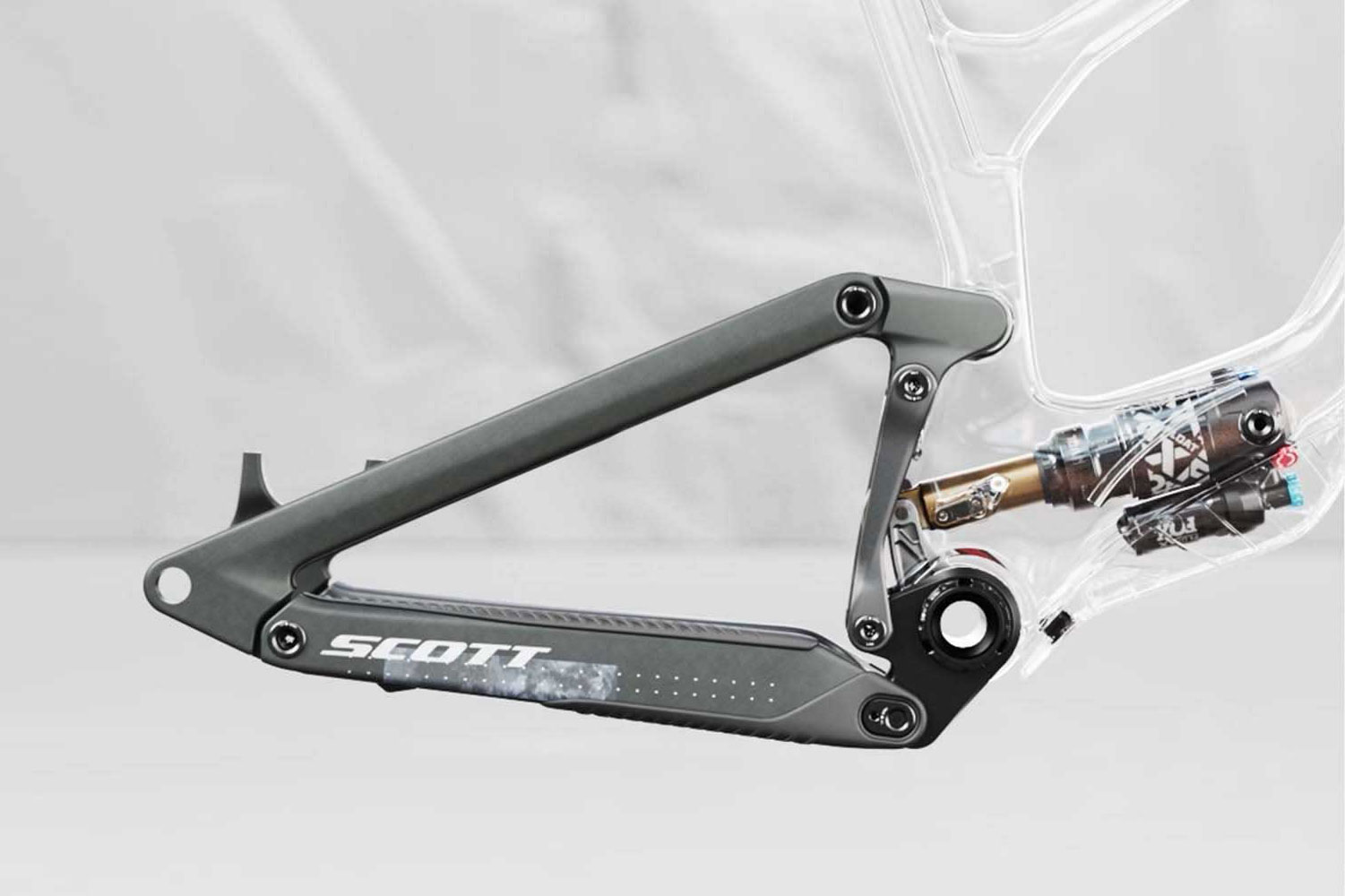
Basically, it seems to take the virtual pivot concept to the next level, letting the suspension designers pick & choose performance characteristics that they want.
Things like supple early travel with more rearward axle path for a plush feel. Less chain growth in the middle to end of travel and a flatter anti-rise curve for consistency pedaling through rough sections and limited pedal kick back on big hits. A smooth, consistently progressive leverage ratio that works well with large volume air or coil shocks.
Really, it just seems like the extra pivots give the engineers more control over the situation. And it simply feels great out on the trail.
Why so Integrated?
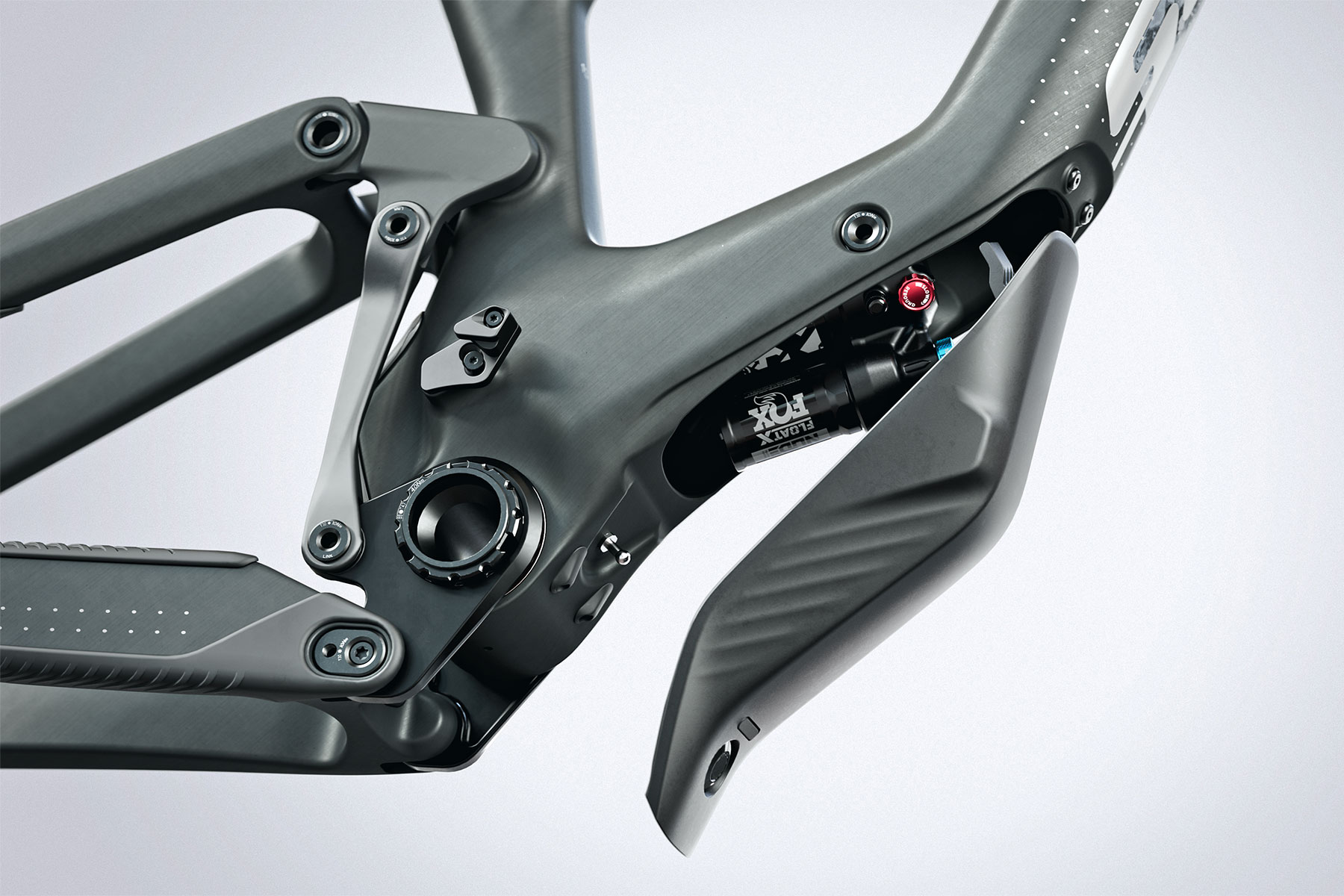
Maybe more noticeable than the extra pivots and linkages tucked in there, is the Integrated Suspension Technology design, hiding the rear shock inside the enlarged downtube in front of the bottom bracket. From a design & engineering perspective, Scott’s move here is to get weight lower in the bike, to allow longer dropper posts, and to protect the sensitive shock from the dirty mountain biking elements.
As the lead Ransom engineer Kai Wheeler described it, “frame Integration keeps dirt & dust out of shock seals. So end of season suspension suppleness is just like day one.”
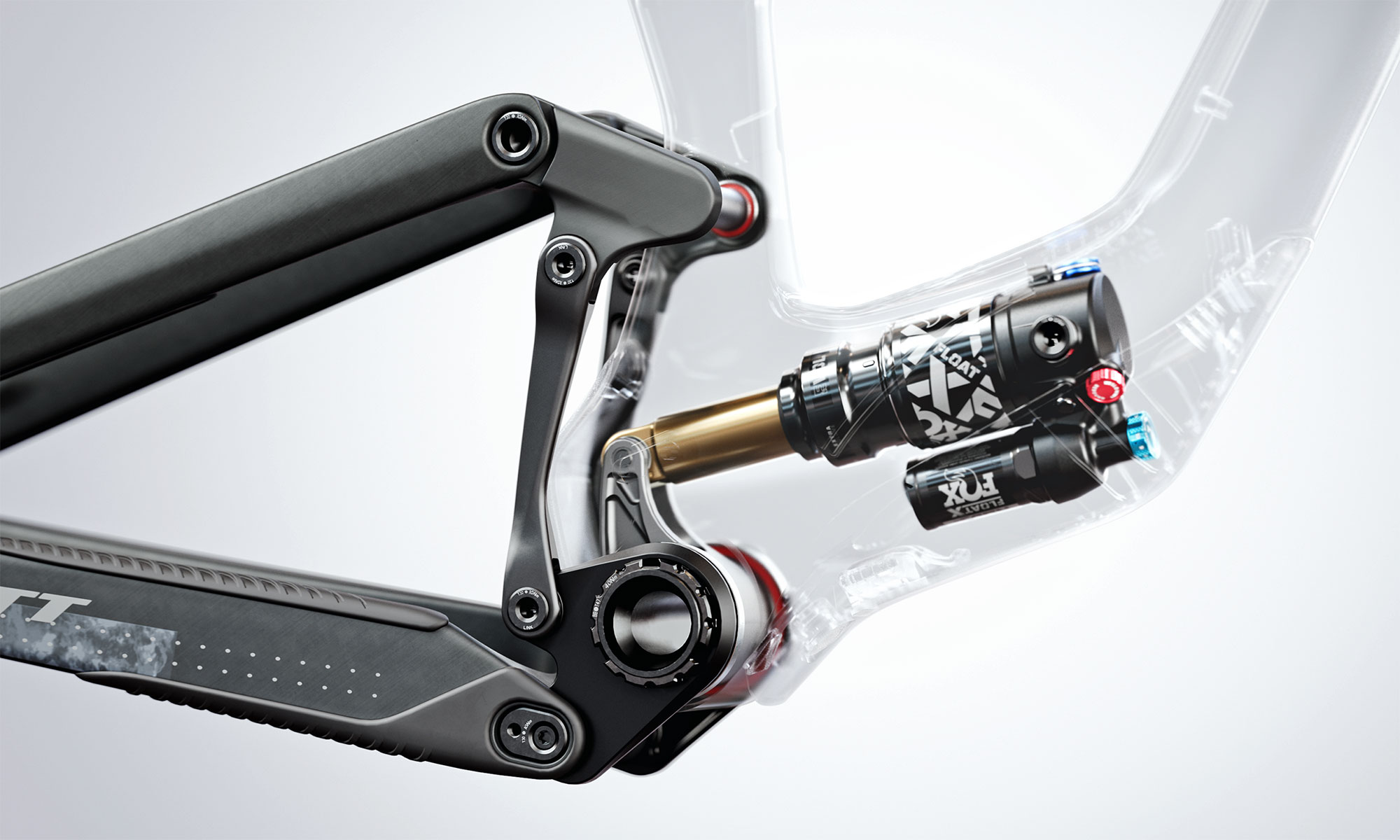
I know how my suspension gets treated year-round, and how much mud I wipe off my seals after most ride. And I also have good idea how few mountain bikers lovingly take care of their suspension and how few actually regularly service the internals (or pivots).

So, I can understand that might be the best reasoning for hiding shocks inside.
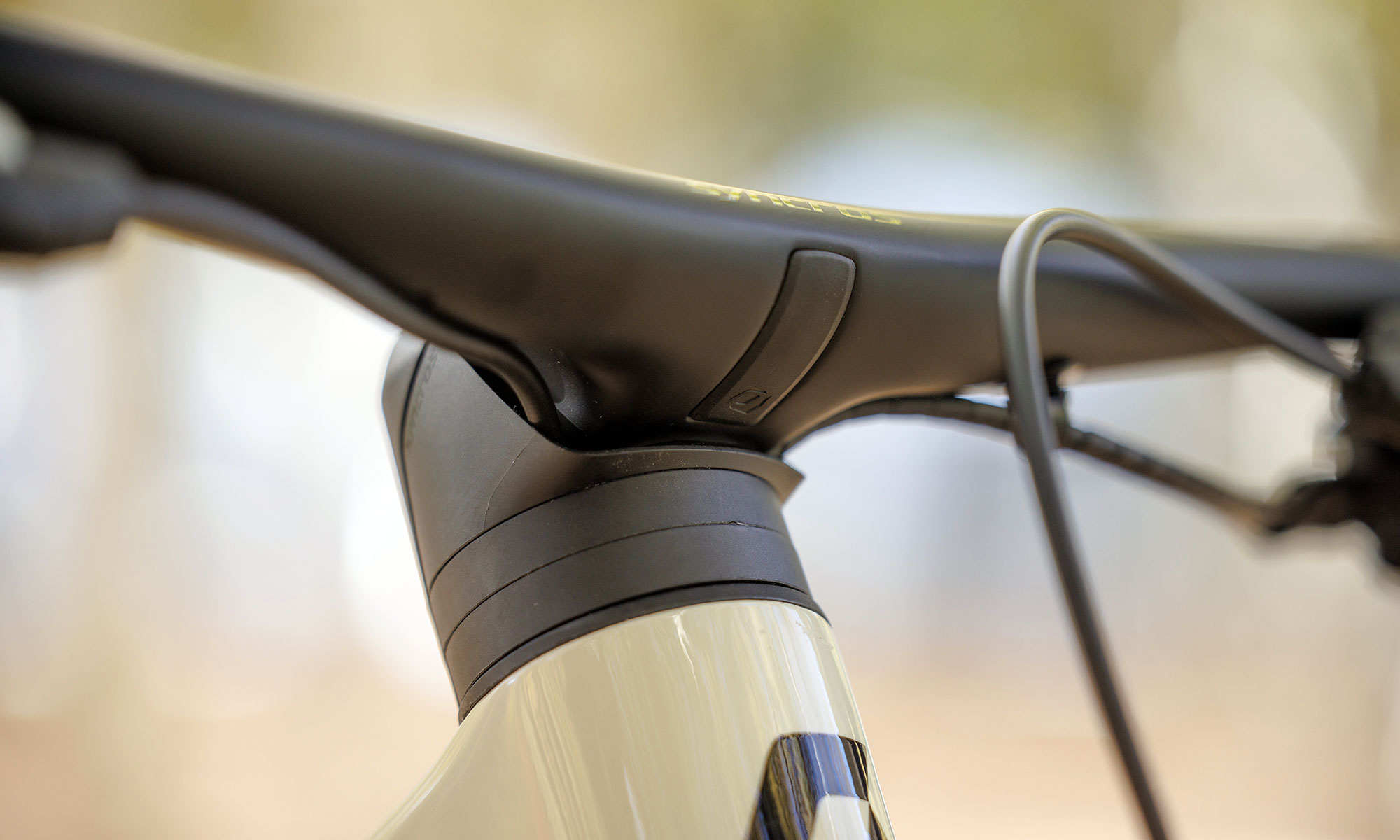
The new Ransom also moves to integrated internal cable routing, too. Routing brake lines under the bar and into the frame through a neat Syncros stem and through the upper headset bearing. Service-wise you can flip the angle adjustable headset cup around without messing with cables, but swapping to 0-offset or needing to replace that bearing is going to require disconnecting line and bleeding brakes.
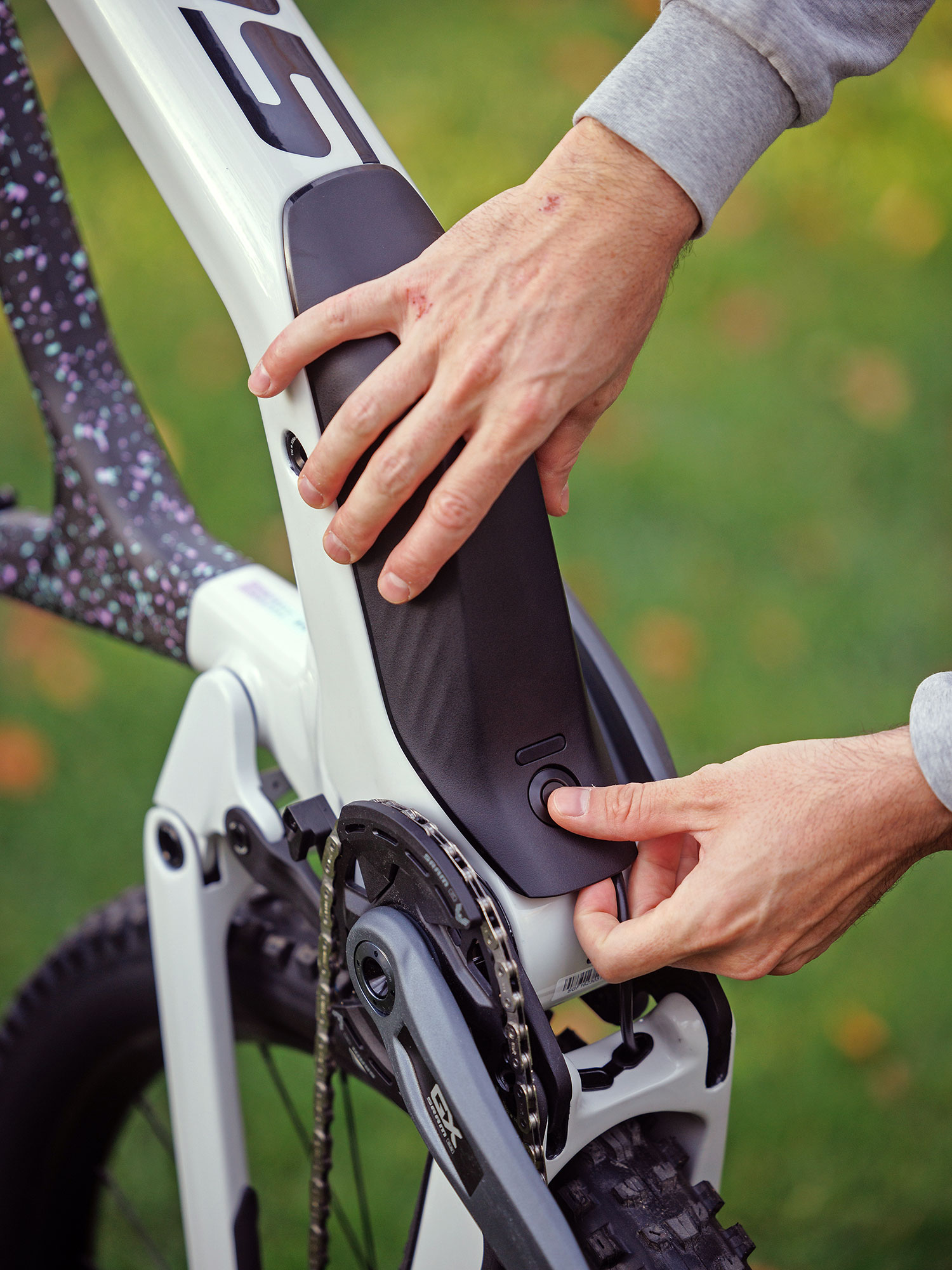

Also new is integrated storage in the downtube. Scott already had to give the lower end of the frame s big cutout to access the rear shock. So, they took advantage of that opening and the big protective bash guard cover to store tools & spares. Clipped into the cover is an 8-bit mini tool. And then, a plastic “Matchbox” slides up into the downtube and clips in place securely. Inside you get a spare tube strapped flat, plus a chaintool & tire levers.
New Adjustable Geometry
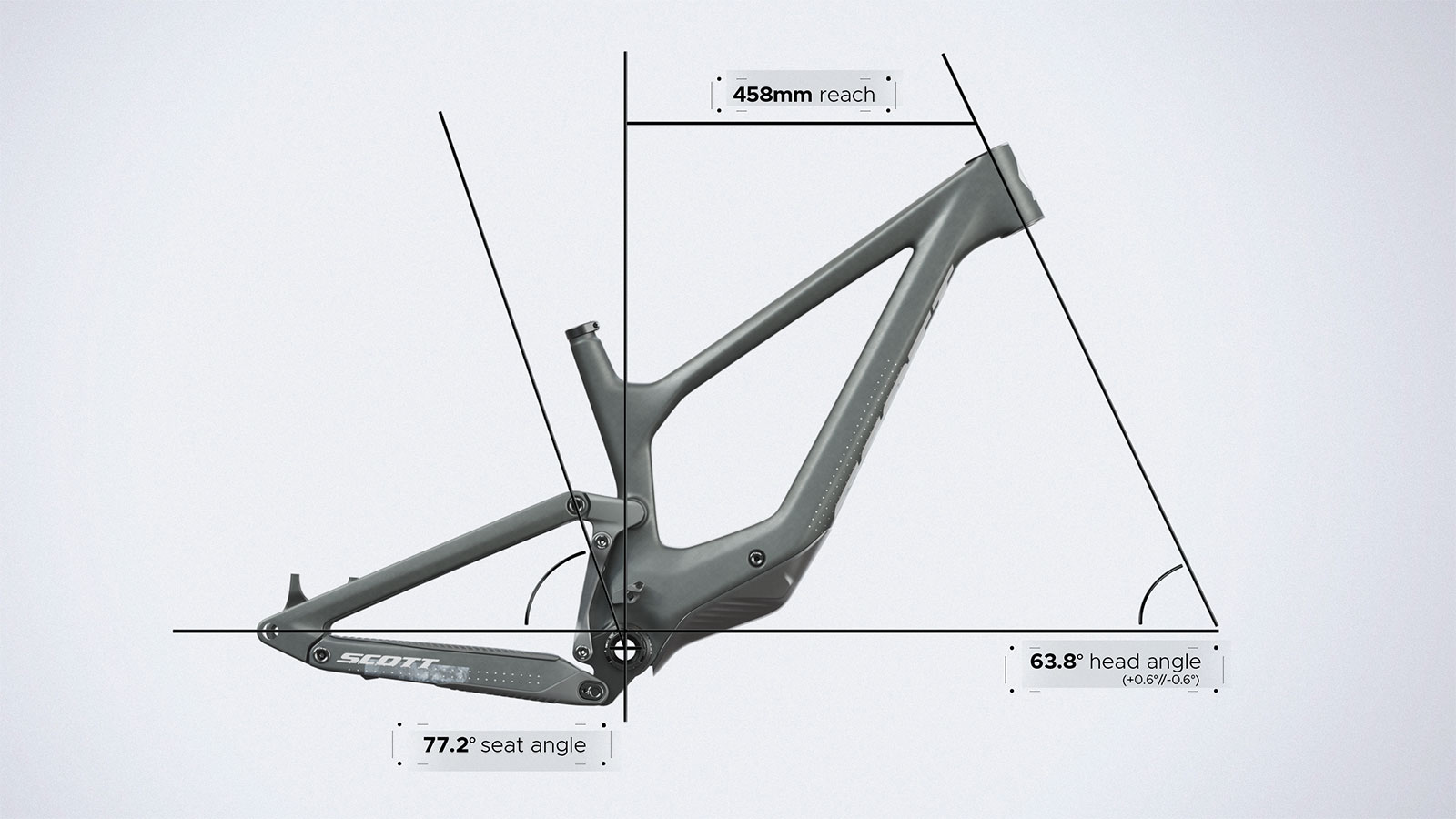
The new Ransom gets updated enduro geometry that is a bit more gravity infused. And it is a 29er-only. Kinda.
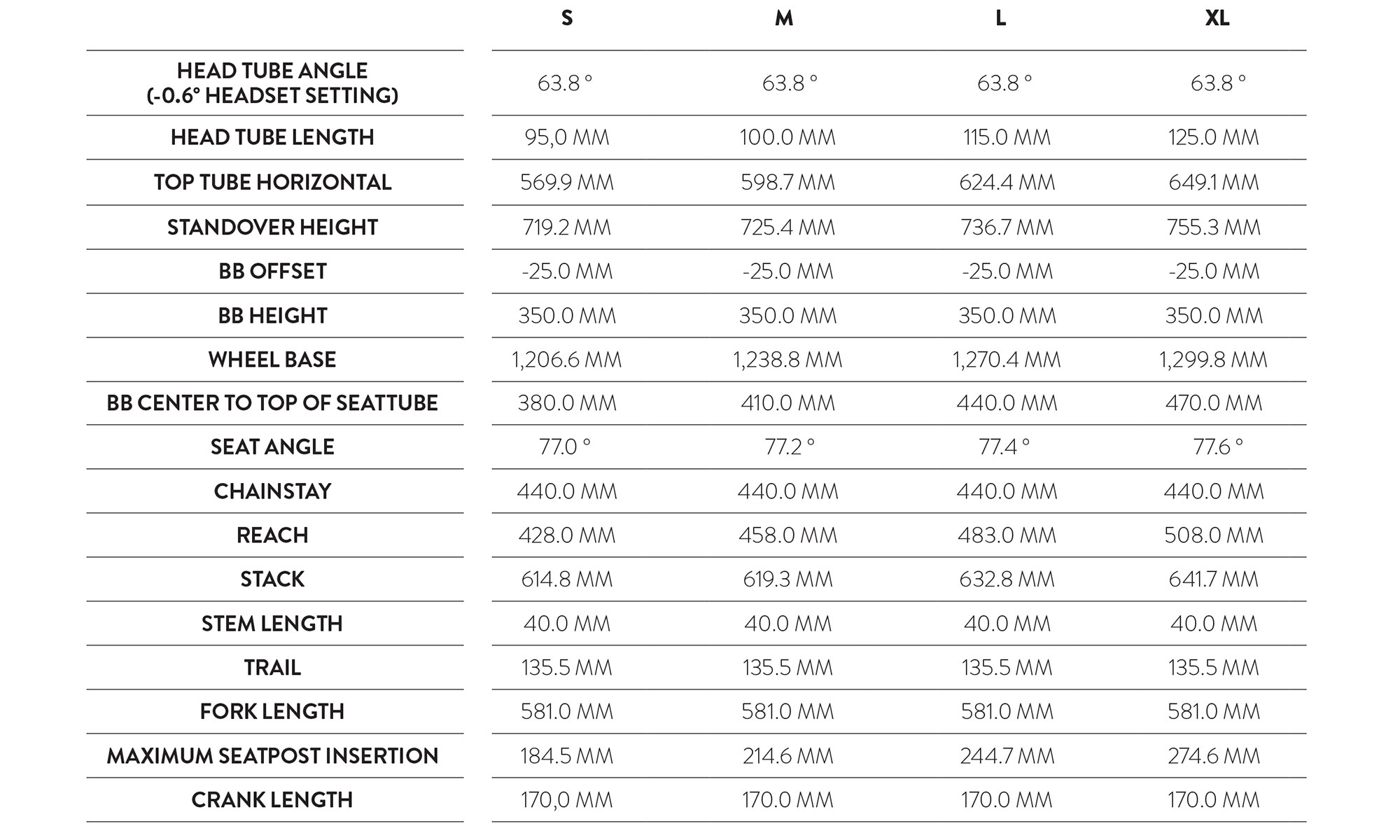
A little longer frame Reach and a little slacker headtube angle want to make this bike go downhill fast. But it also gets a substantially steeper seattube angle to 77.2° for a more forward position for improved climbing. A lot of focus on putting more weight on the front wheel for good steering handling grip. And it makes the bike feel almost short when you are going uphill. Don’t fret, it feels long and slack going down.
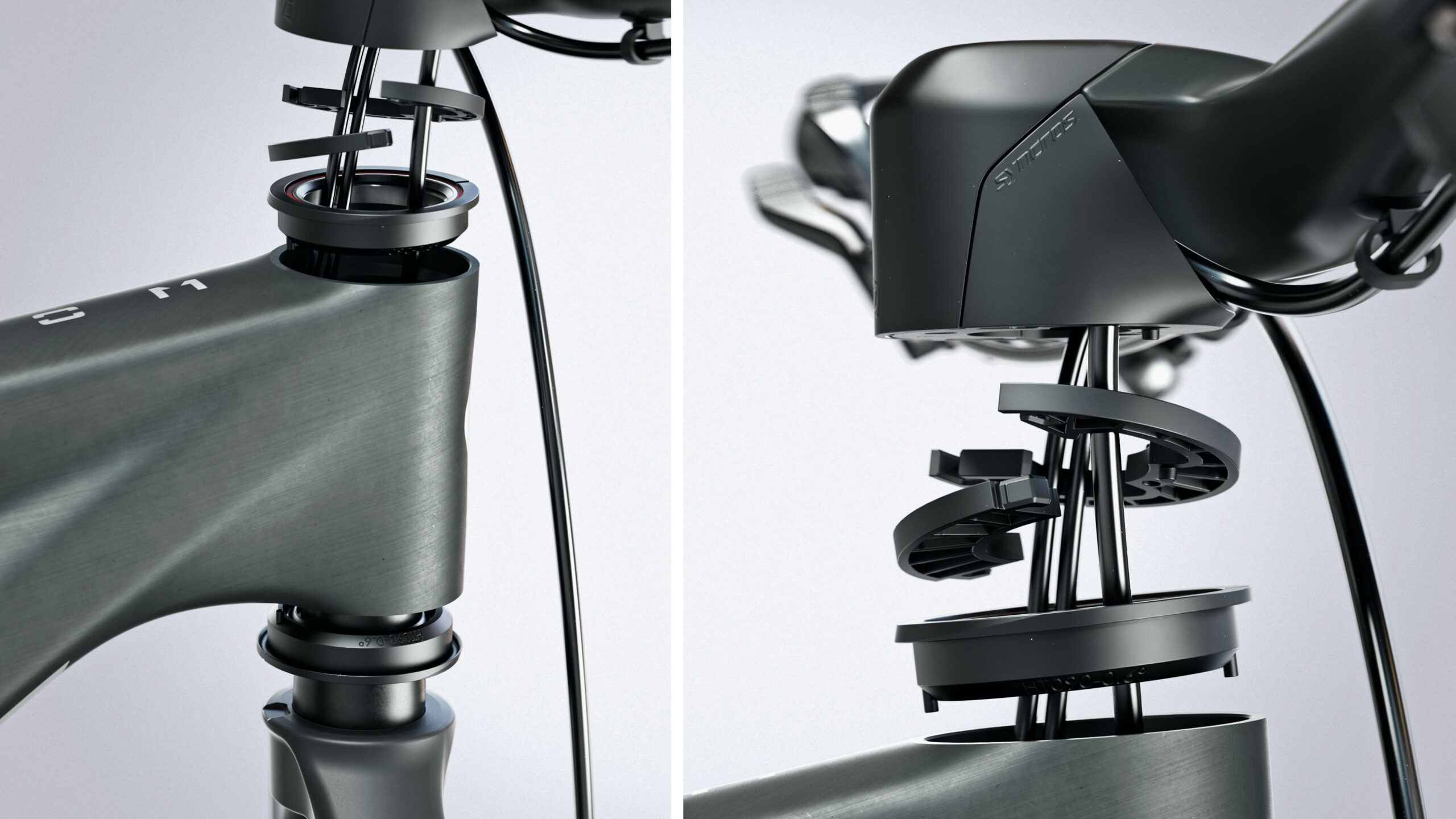
That slackest 63.8° head angle is also adjustable so you can fine tune your ride. Many will keep it in that slackest -0.6° offset position for max stability at speed. But flip the +/- 0.6° cups around to get a 65° angle if you ride tighter trails where you need more maneuverability. Or the bike also comes with a zero offset cup for a 64.4° happy medium setting.
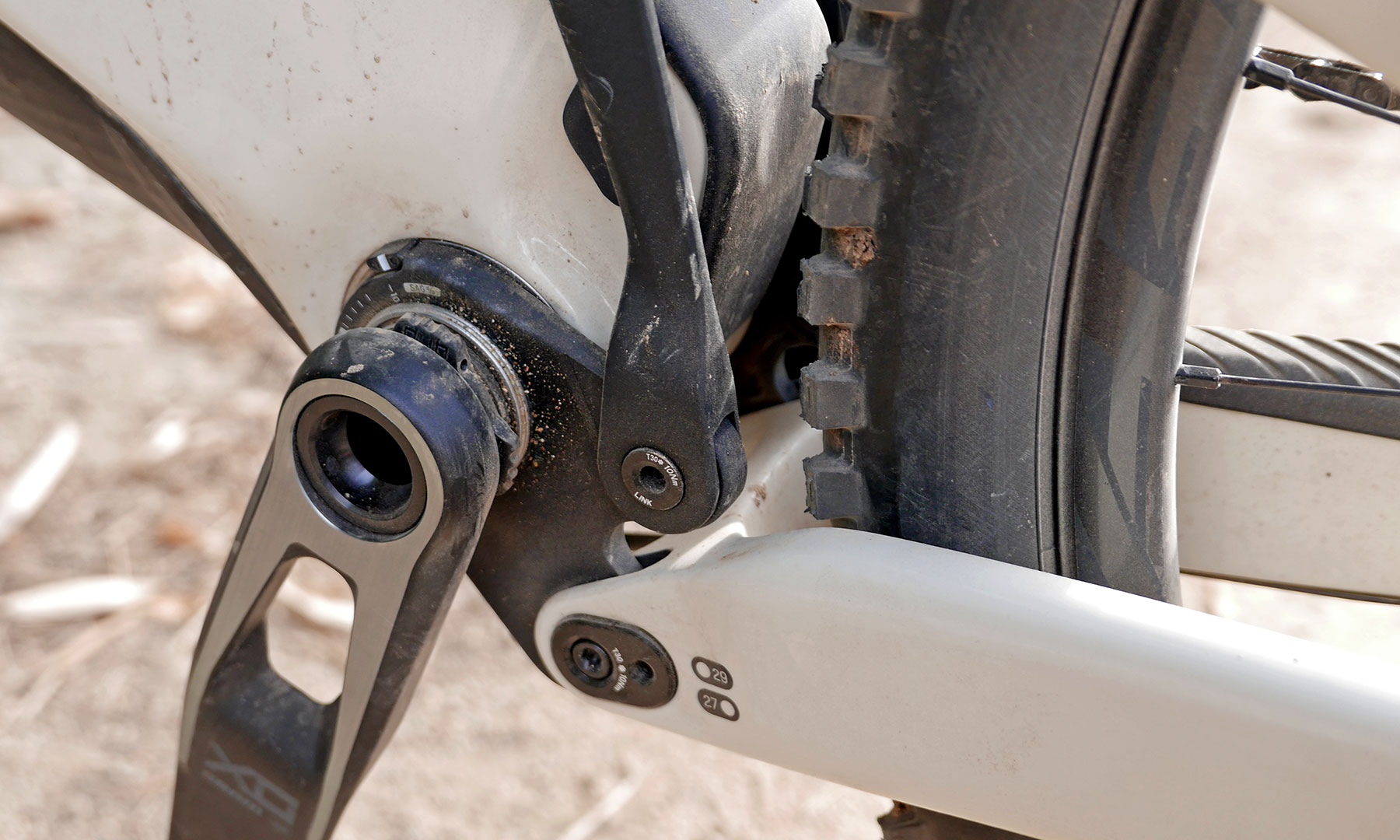
The rear end is also adjustable with a chainstay flip chip that allows an optional 27.5″ mullet rear wheel swap. No complete bikes come set up that way, but Scott knows that serious gravity riders want options depending on where they ride or race. And with this simple chip, the mullet conversion is quick & easy.
Trac-Loc: a whole new type of Twin-Loc 3-position remote lockout!

I first rode the triple-button Twin-Loc 2 remote lockout and dropper controls on the XC Spark when it first debuted the integrated internal shock layout for Scott 2.5 years back. It took a bit to adjust to. But wow, did it work well. Especially that middle reduced travel traction control mode (with reduced air volume AND higher compression damping). The new Genius also gets the same setup, which Tyler show in great exploded detail here.
Well, now the Ransom reinvents the remote lockout, too. And this genuinely might be the single feature that makes this bike work so well. (Sorry, 6-bar.)
You see, the new Trac-Loc isn’t actually a lock-out. It still has 3-modes. But Scott calls these three: Climb, Ramp Control & Descend.
The unrestricted Descend mode is fully open as you would expect.
But the Ramp Control mode does not change travel or compression damping. It is simply closes an air chamber in the shock, increasing suspension progression, like adding a bunch of volume spacers at the push of a button. Magic.
Then, Climb mode is your normal lower air volume AND extra compression mode, reducing travel down to 130mm and keeping the bike sitting high to make pedaling uphill more efficient.
Tech details
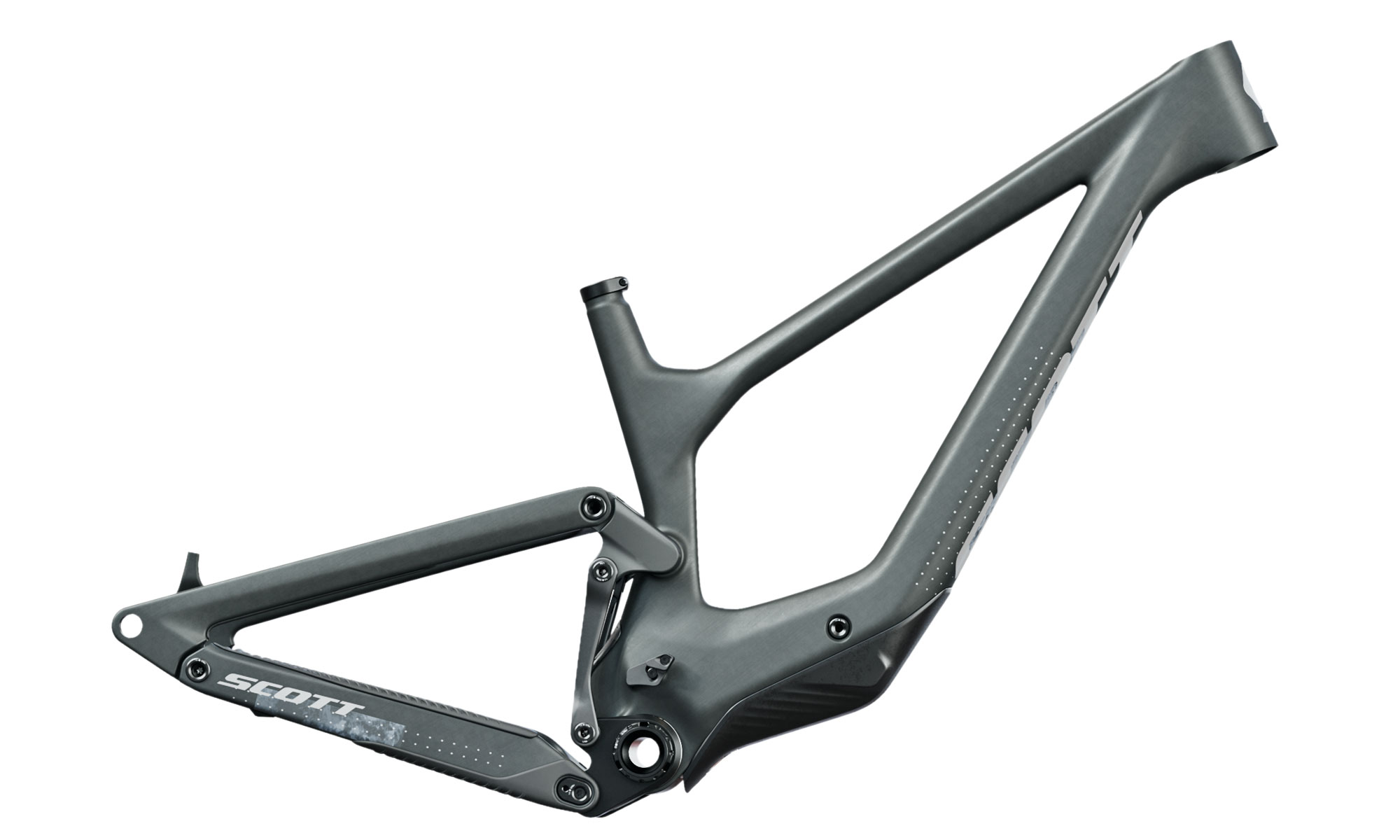
The new 2024 Scott Ransom comes in two levels of frame construction, all with alloy links. The top-tier features ultra-hi-mod HMX (High Modules Extreme) carbon front & rear triangles, only on the top 900 RC. A standard-spec hi-mod HMF front triangle paired to 6061 aluminum swingarm rear end on all other models reduces cost a bit, only adding a couple hundred grams.
All frame specs combine 170mm of travel front and rear. And all reduced down to 130mm in traction control Climb mode. There’s also a neat Sag-meter on the non-driveside link at the BB that makes suspension setup easy. And with the shock hidden, it lets you know if you’ve used all of your rear wheel travel.

The bike sports 29″ wheels and 2.5″ tire clearance. It features internal cable routing through the adjustable angle headset – wireless or mechanical shift compatible, a PressFit BB92 bottom bracket, UDH, and Boost spacing. With the 31.6mm Syncros posts, you get long dropper travel – 140mm on S, 180mm on M & 210mm on L & XL.
Pricing, options & availability
Five complete bike builds are available of the new Ransom, all with 29″ wheels only.
2024 Scott Ransom 900 RC
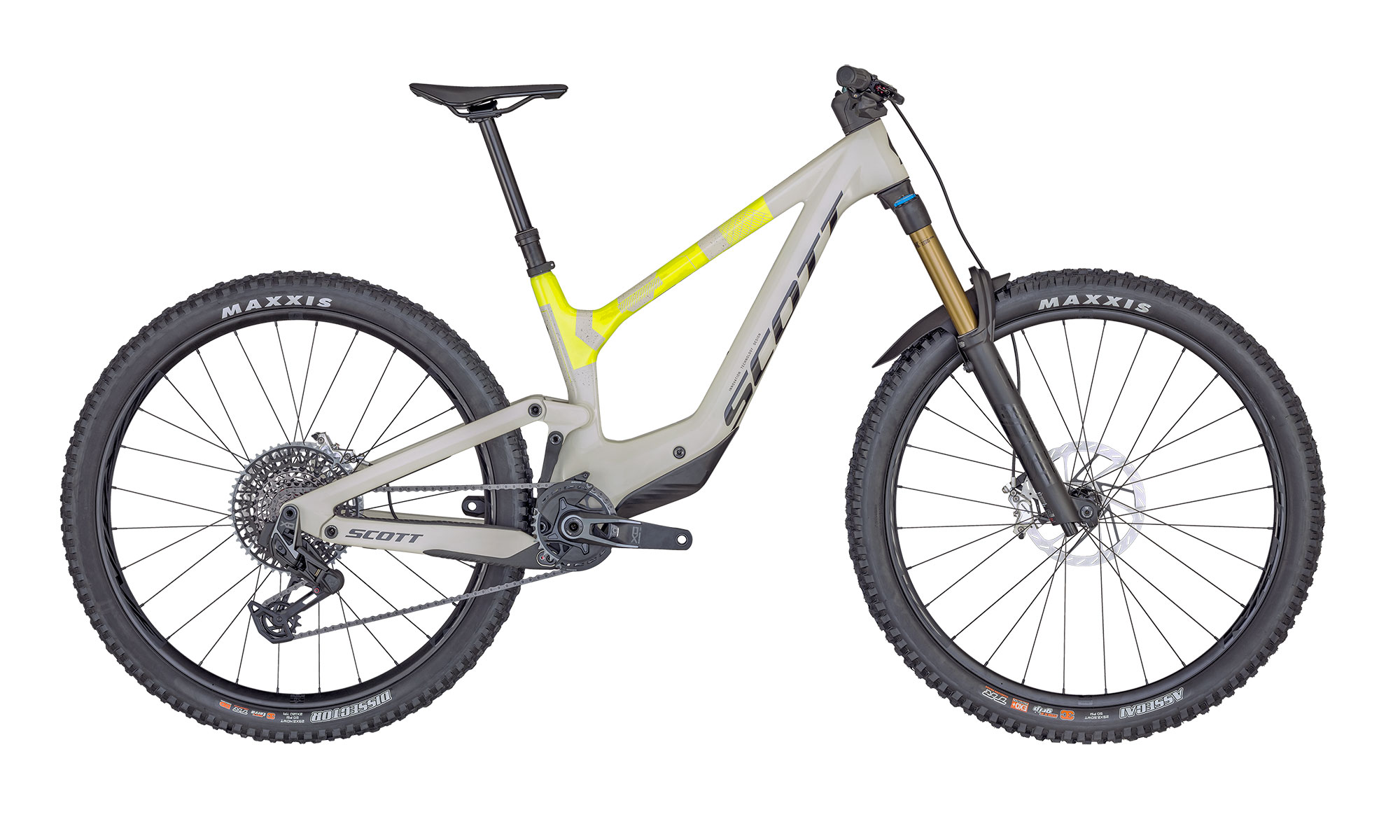
The 2024 Scott Ransom 900 RC that I tested is the top of the crop at a whopping $10,000 / 10,000€. For that you get the full HMX carbon frameset, a Fox 38 Factory fork to match the hidden Float X Nude EVOL Factory shock hidden inside the frame, and a complete SRAM X0 Eagle AXS Transmission with Code Ultimate Stealth brakes at a claimed 15.2kg.
A 1-piece carbon Syncros Hixon iC bar+stem cockpit, Duncan travel adjust dropper, and no-nonsense alloy RaceFace R30 wheels wrapped in Maxxis Assegai EXO+/Dissector DoubleDown tires finish the build (tubeless sealant & valves included). Plus, built in Syncros Tubeless Tool in the handlebar ends & fully-stocked Matchbox kit inside the downtube.
Ransom 910 & Contessa 910

The stealth black $8000 / 8000€ Scott Ransom 910 softens the blow to your wallet just a bit, switching to the HMF mainframe & alloy rear, plus a Performance Elite fork & shock, and still a GX AXS Transmission with Code RSC Stealth brakes.
You get the same bar, dropper, built-in tools & tires, on Syncros Revelstoke 2.0 alloy wheels. All at a claimed 15.7kg (all weights claimed for a size M set up tubeless, but without the hidden tools/spares installed).
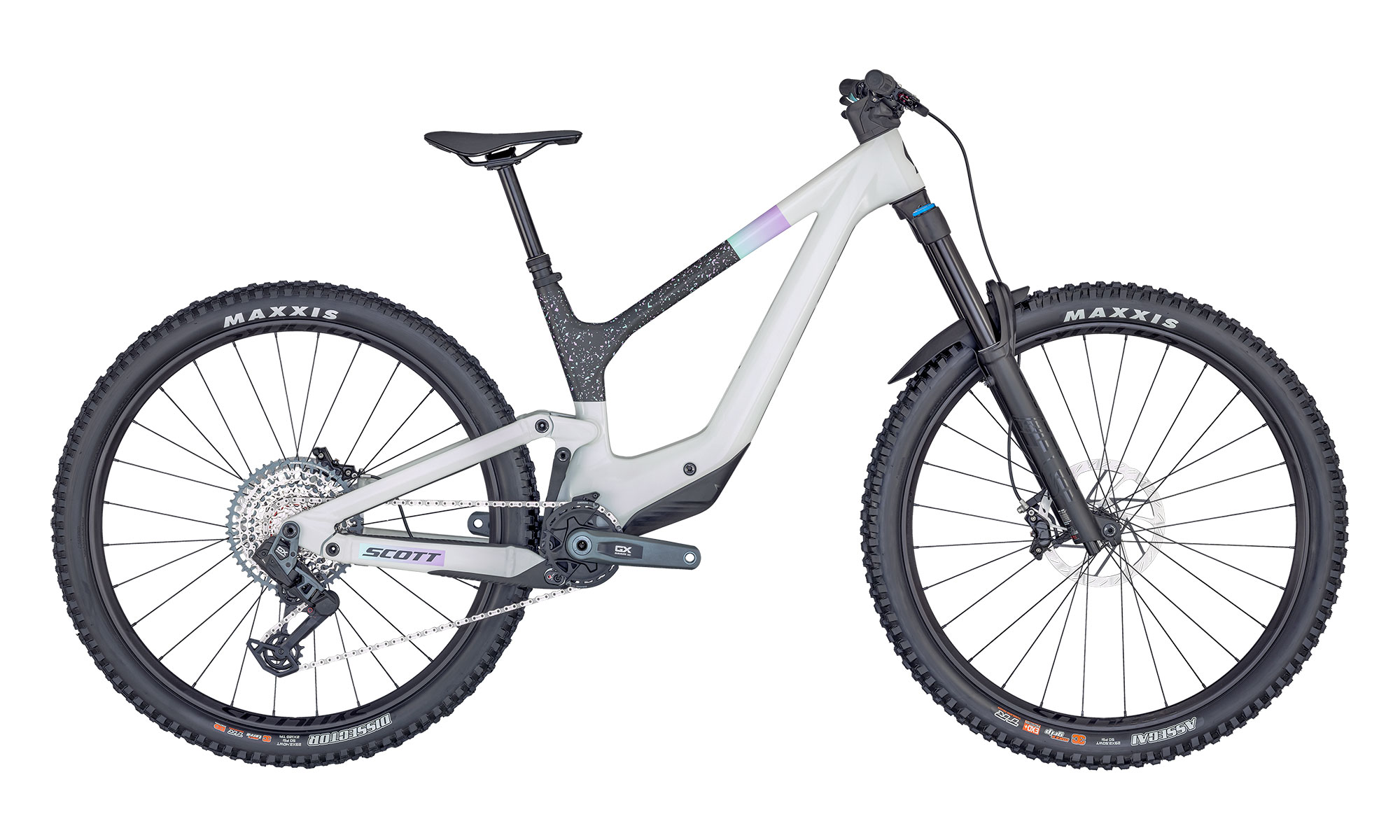
A Contessa Ransom 910 build at the same price gets a flashier white & splatter paint finish, but the same exact spec, except for a more women-friendly Syncros Savona saddle vs the Tofino on all of the other bikes. The only limit is the Contessa only comes in sizes S-L.
2024 Scott Ransom 920 & 930

Then, a 2024 Scott Ransom 920 at $6000 / 6000€ lops off another two grand in mustard yellow by dropping back to a conventional mechanical SRAM NX Eagle drivetrain on a good old fashioned Universal Derailleur Hanger.
It gets a RockShox Zeb Select+ fork, but the same Fox Float X Nude shock hidden inside. Plus, alloy separate Syncros bar and stem (still with hidden internal routing), the same Duncan dropper & Revelstoke 2.5 wheels for a claimed 16.4kg.
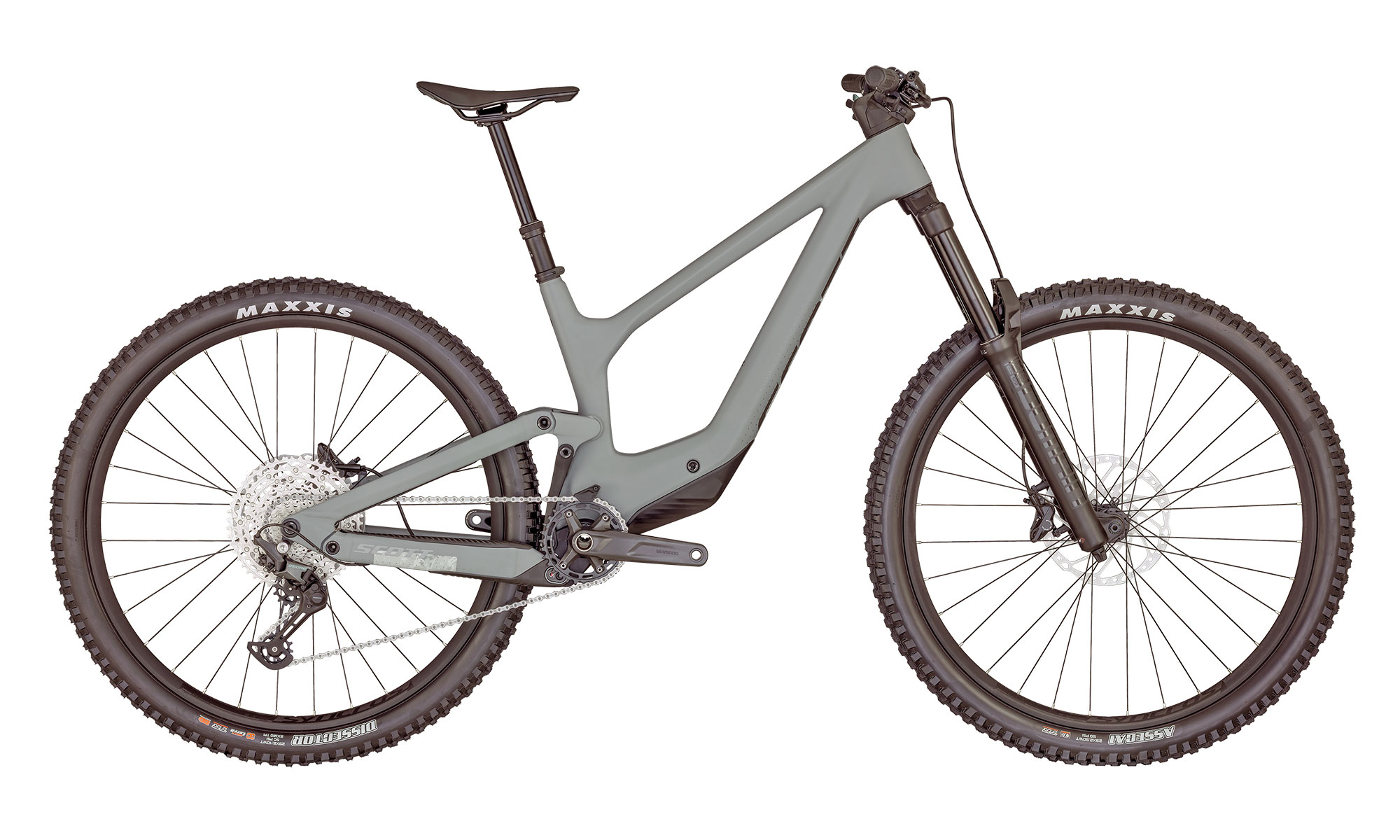
Lastly, the 5200€ Scott Ransom 930 offers the lowest cost of entry to the new bike. (Sorry Americans, looks like this one is not coming your way). You get the same HMF carbon front end with remote controlled 3-position Fox Float X Nude shock inside and alloy rear as the 910 & 920, but a lower spec again – still with the Duncan dropper & Syncros Matchbox internal storage.
The 930 gets a RockShox Domain R fork, the only Shimano build with Deore 12sp & MT520 4-piston brakes, plus 30mm alloy tubeless rims on Formula hubs, at a weight of 16.7kg.
As for availability, it depends a bit country-to-country. But officially, the new 2024 Scott Ransom is slated to be in dealer shops from the “early summer”. So you will get to riding as soon as possible.
So how does it ride?
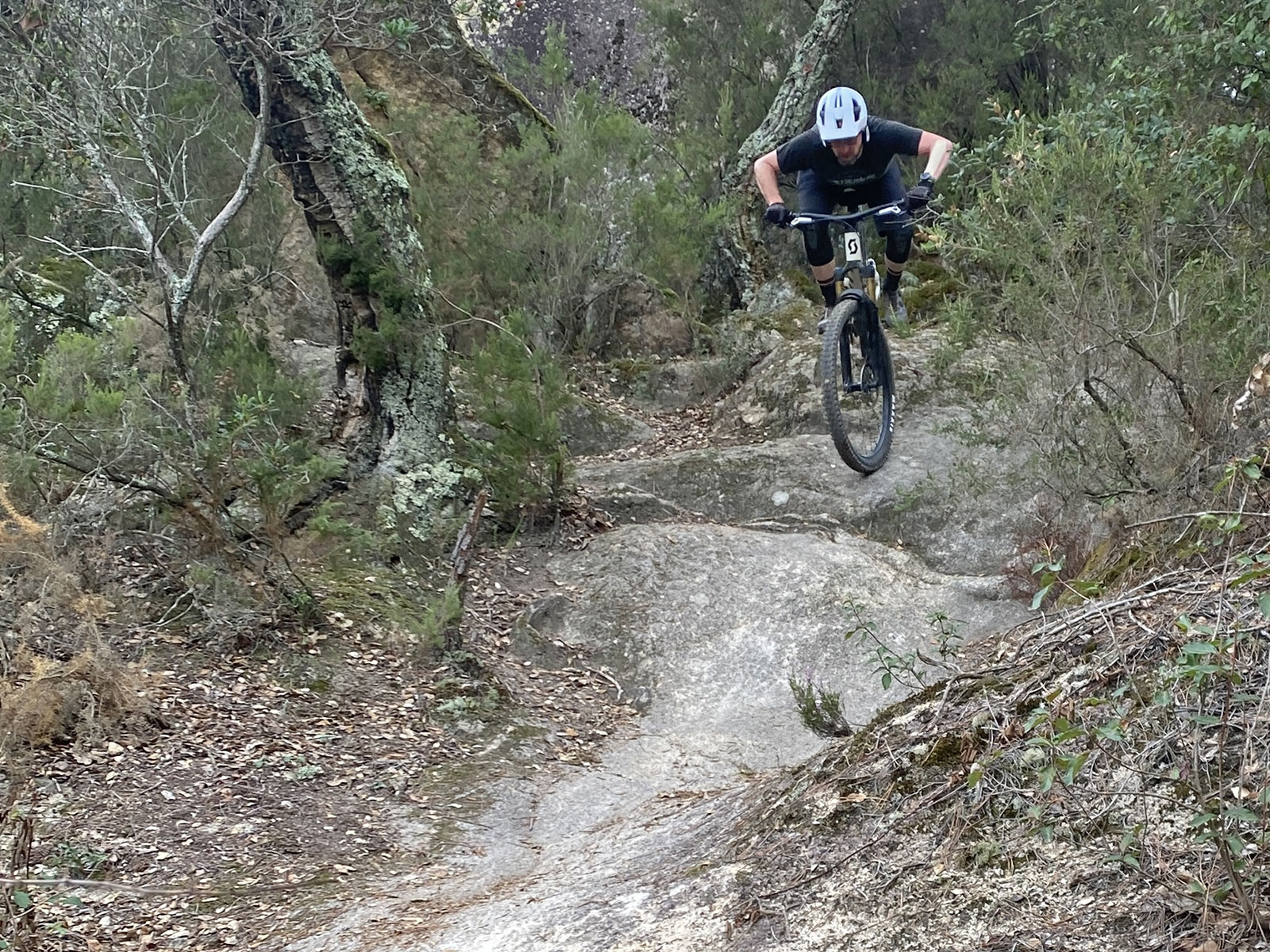
My initial impressions were that the bike really crushes downhills. The 6-bar really seems to do some gravity-shredding magic.
But really, the first thing I did on the new bike was to pedal it up some super steep rocky & sandy fire road climbs to earn my turns a bit. And popping the new Ransom into reduced-travel traction mode really did turn it into a mountain goat. Thinking back, it’s kinda no surprise that my <16kg test bike reduced to 130mm of rear wheel travel climbed like a regular trail bike.
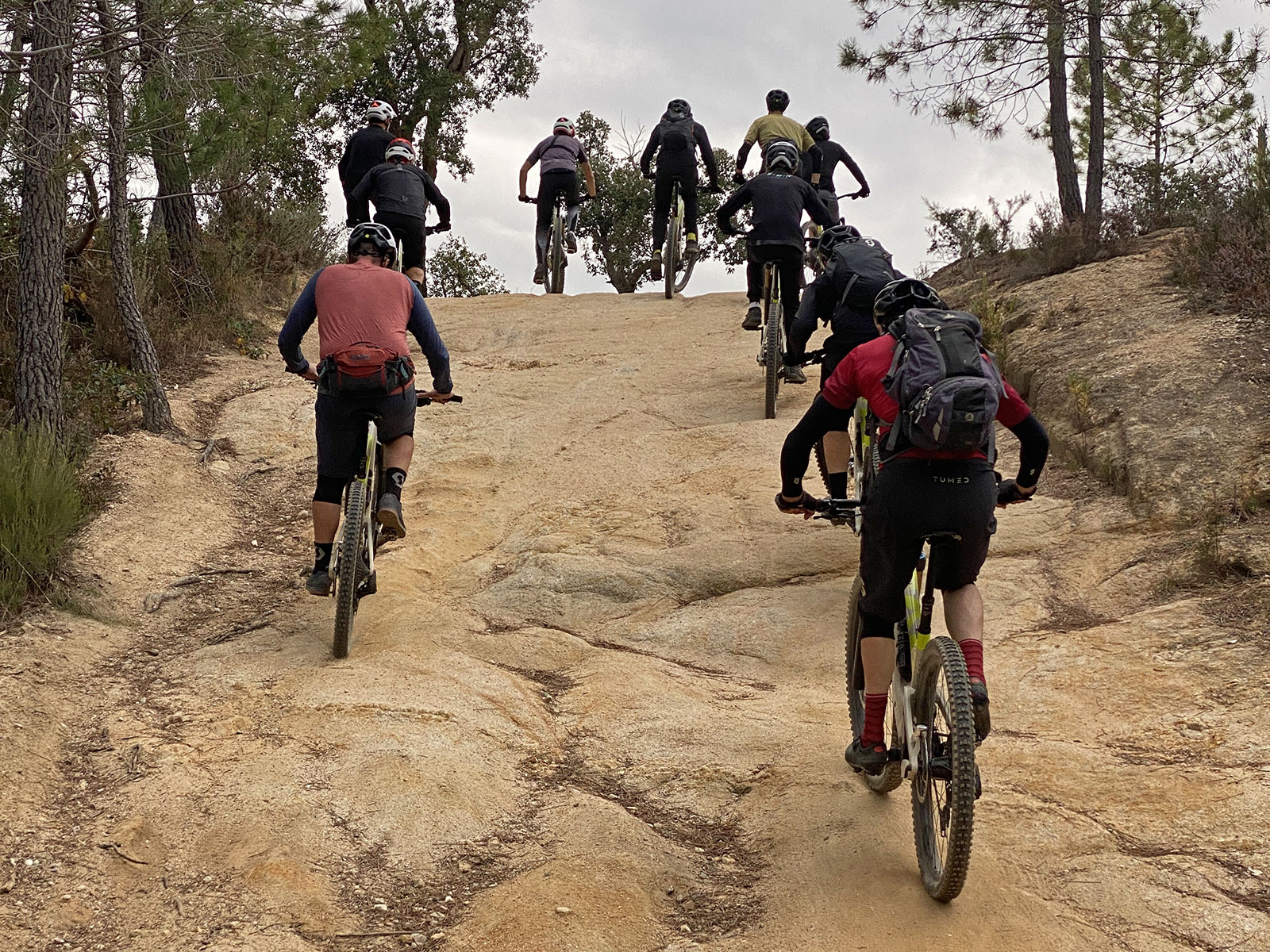
The magic of this bike really feels like the Trac-Loc. That lets it be a killer freeride bike on the descents. And a perfectly reasonable trail bike for the climbs back up. And there really isn’t much of a downside. Well, except for its impact to your wallet.
Tune in tomorrow morning for my complete detailed review of the Ransom 900 RC.
